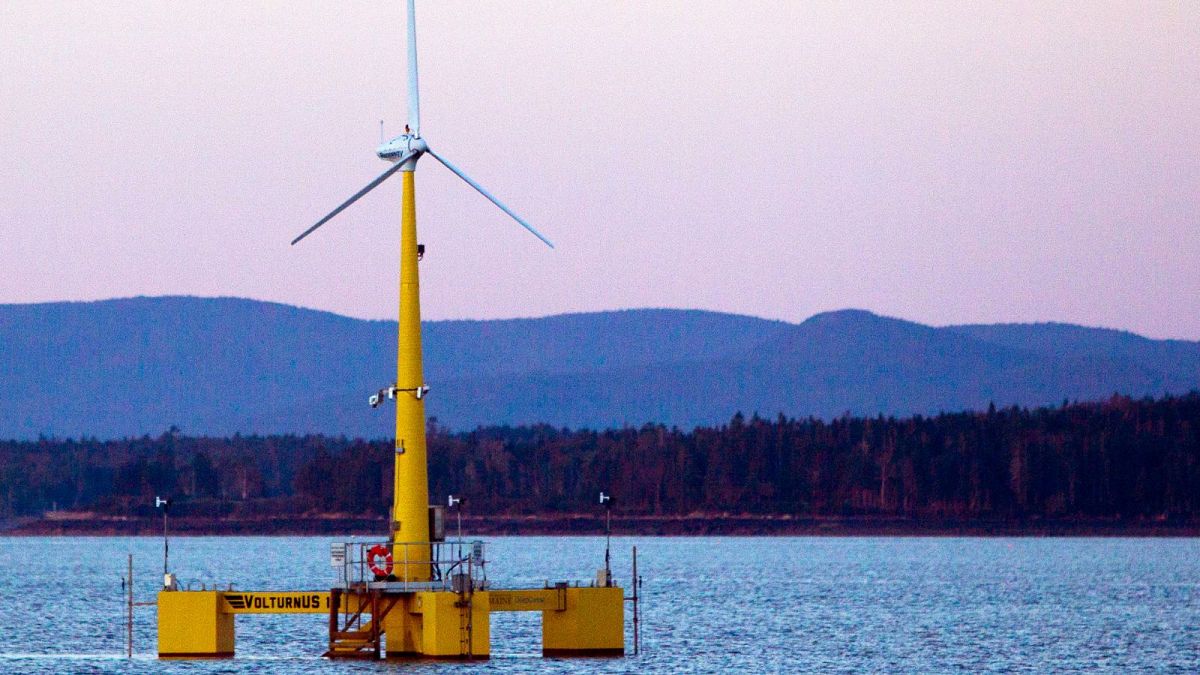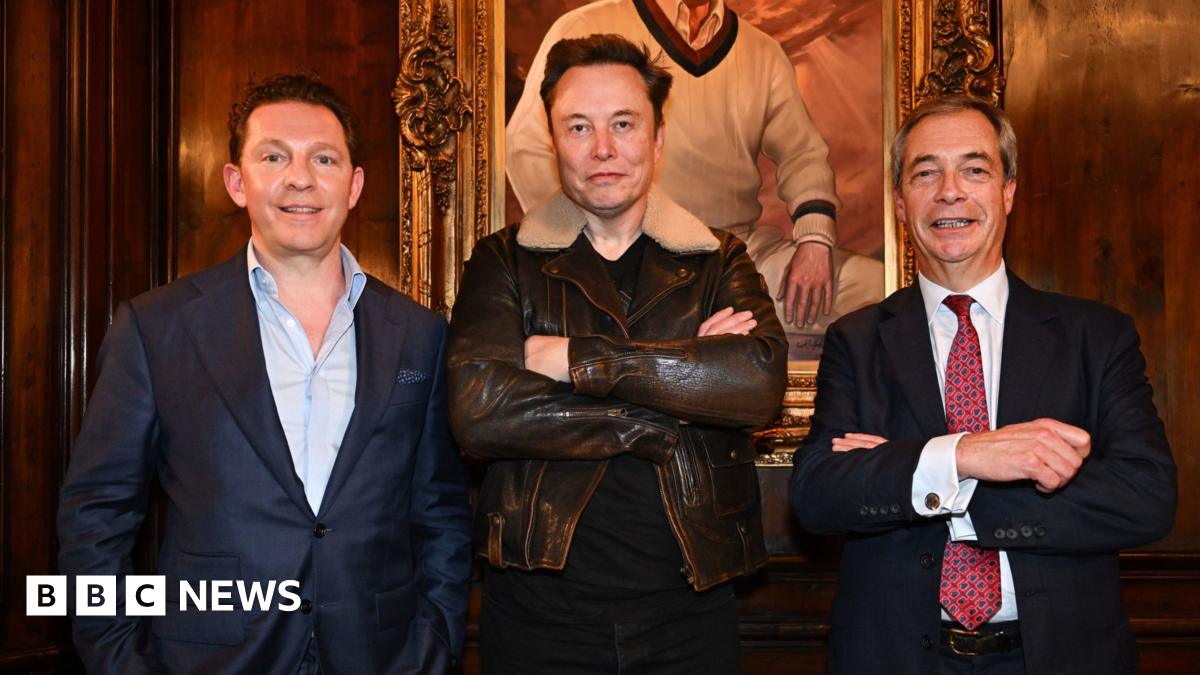World
Could floating wind farms be a game changer for renewable energy?

Countries are developing the tech to produce wind power at even greater depths.
Offshore wind has become a staple of renewable energy production. But so far it has been mostly limited to shallow waters, restricting how many countries can take advantage of it.
That could soon change thanks to floating wind. The technology consists of a turbine mounted on a buoyant substructure and anchored to the seabed with chains.
This means it can be deployed in seas of 300 metres deep and more, compared to the more traditional system of mounting turbines on the seabed, which becomes uneconomical in depths of more than 60 metres.
Because it allows wind production in deeper waters, the technology is expected to bring wind energy to new markets, including in the Mediterranean, and it is hoped that it will be fully commercial by the end of this decade.
“Floating offshore wind is a crucial player in the battle against climate change,” says Lorenzo Palombi, global commercial and finance director of projects at German-based energy company BayWa r.e.
“Its unique ability to tap into markets incompatible with bottom-fixed technologies and unlock areas with higher wind potential positions it as a key solution.”
Which countries have the most floating wind?
Europe is currently leading on floating wind, according tofigures from the Global Wind Energy Council.
The region lost its title as the world’s largest offshore wind market in 2022 with the US and China overtaking it in new additions. However, it still holds the top spot for floating, making up 79 per cent of new additions last year.
Overall, it boasts 208 megawatts of capacity – or 88 per cent of global installations. The majority of this comes from small demo projects, but countries are beginning to look at ramping up production to commercial level.
France is on track to develop the world’s first commercial floating wind farm. The Pennavel project will be built off the coast of Brittany and is scheduled to be commissioned by 2031. It is expected to produce 250 megawatts – enough to provide power for 450,000 people every year.
Meanwhile, the UK aims to reach five gigawatts of production by 2030 and is moving ahead with government support for projects. Eyes are also on Norway, which already has demo projects, as well as Ireland and Mediterranean countries.
On the other side of the world, Asian countries are also looking into floating wind. In October 2023, the Japanese government announced four candidate areas for demo projects and, recently, the Marubeni Offshore Wind Development Corporation announced a demo project with two turbines in waters around 400 metres deep.
South Korea also has a lot of potential and is developing what will be one of the largest floating wind farms so far once it is completed in 2028. The country is also seeing positive developments when it comes to manufacturing and port investment, says Rebecca Williams from the Global Wind Energy Council.
“I think we’re seeing that some of the Asian countries are now giving Europe a run for its money,” she says.
“We think that there is a lot of scope for collaboration on the topic of floating wind and particularly on floating wind supply chains,” she adds, pointing to opportunities between Japan, South Korea, the Philippines and Australia.
Is floating offshore wind good news for coastal communities?
Developing floating wind will not only allow the production of green, local energy, but could also help revive coastal communities. For example, the Pennavel project has pledged to use ‘local content’, boosting jobs in the region. It is also spending €5 million on economic development in the area, including cultural activities, events and training courses.
Floating wind can also help drive investments in ports. These are needed for all offshore wind projects, but are particularly crucial for floating because most of the construction takes place inside the port to avoid being affected by weather conditions.
“If we compare with a bottom-fixed project, we can roughly say that 80 per cent of the project is directly at sea. If we speak for floating wind, it’s the opposite. It’s 80 per cent inside the port,” says Thomas Debize from Port-La-Nouvelle, a French port built specifically for projects like floating wind.
The port is looking to cash in on France’s ambitions to develop wind power in the Mediterranean, as well as the ambitions of neighbouring countries, like Spain and Italy, which will need floating technology due to the depth of the sea.
Port-La-Nouvelle is a rare case of a port designed for floating wind. In many places, there will need to be port upgrade programmes to increase the space available to construct projects and accommodate their supply chains, something that is both a challenge and an opportunity, says Williams.
“We’ve seen from the experience in fixed-bottom wind in Europe how ports can be used to really facilitate local growth of local coastal communities,” she explains.
One example could happen in the UK. Speaking at a port in North Wales in March, Labour leader Sir Keir Starmer announced that the party’s envisioned state-owned energy company, GB Energy, will fund the construction of floating wind. He emphasised Wales’ potential and said the party wants to unlock billions in private investment to turbocharge jobs.
“I think the Labour Party sees the social value as well as the economic value from the energy in floating offshore wind because, especially in the south of Wales you have post-industrial towns, neglected port towns that are really in need of a boost and some investment,” says Chris Rosslowe from energy think tank Ember.
“You can invest in these ports. You deliver social benefits and jobs to these towns in the south of Wales. Maybe this will link to the steel industry as well – that obviously has a lot of uncertainty over it right now in the south of Wales,” he adds.
Governments need to get behind floating wind
Alongside physical infrastructure, like ports and grid connections, floating wind also needs certainty from governments. One of the reasons the UK is viewed as a strong candidate is because it has been clear about its ambition and support for projects.
“What that’s done is really focus the minds of investors [who] can see the direction of travel that the UK is going in, they’re clear about the pipeline, and then they can put some money behind it,” says Williams.
Governments also need to take into account how current economic difficulties impact projects as inflation and other market dynamics increase the cost of projects, says BayWa r.e.
The Global Wind Energy Council has revised some of its projections down due to this, but Williams expects growth to be quick once the sector overcomes the headwinds.
She sees realising the potential of floating wind as key, both to help the world meet its goal to triple renewables and to provide opportunities for industry, communities and local economies.
“This is about seizing the opportunity and getting on the front foot before you become a taker of technology or a taker of the energy transition. And instead, thinking about how you can be part of an opportunity-focused growth story where you can build a new economic model for your country or for your market,” says Williams.









